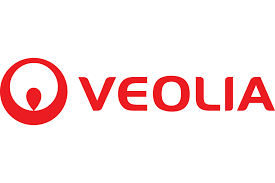An industry-leading French manufacturer of Active Pharmaceutical Ingredients (APIs) was treating its wastewater with ozone in order to break down recalcitrant pharmaceuticals into smaller, biodegradable organics prior to biological treatment. The manufacturer needed faster monitoring information - not possible with COD lab tests - to optimize ozone dosing. They turned to total organic carbon (TOC) monitoring for rapid, accurate data.
This article explores this case study, looking at the use of the Sievers TOC-R3 Online Analyzer to measure TOC in near real time, allowing for reliable control of ozone dosing.

Image Credit: Bilanol/Shutterstock.com
Challenge
The company utilized chemical oxygen demand (COD) processes in a laboratory environment to monitor oxidation and determine the level of organics present, but these tests did not provide frequent enough data to capture all of the changes occurring throughout the process.
Veolia was responsible for managing the API manufacturer’s wastewater treatment plant (WWTP), and it was identified that employing a rapid, dependable online analyzer would be key to providing real-time data to optimize the treatment process.
The analyzer in question would be required to accommodate challenging samples because the API wastewater contained high levels of total dissolved solids (TDS).
Solution
TOC analyzers are ideally suited to monitor ozone treatment of wastewater, because TOC analysis offers users accurate, efficient organics measurements in real-time. This technique acquires information more quickly than COD tests, meaning that TOC analysis facilitates better optimization of ozone dose and evaluation of performance.
This specific application required a TOC analyzer able to accommodate the complete oxidation of samples, as well as the capacity to handle high TDS.
The Sievers TOC-R3 Online Analyzer offers advanced combustion technology, with the instrument employing high temperature non-catalytic combustion (HTNCC) at 1200 °C to fully recover typically hard-to-oxidize compounds.
It is important to note that these challenging wastewater compounds tend not to be fully recovered by other technologies; for example, high temperature catalytic combustion (HTCC) or two-stage advanced oxidation (TSAO). Even COD can struggle to fully recover these compounds.

Figure 1. Schematic of the ozone treatment.
Image Credit: Veolia Water Technologies
Results
A two stream Sievers TOC-R3 was used to analyze organic contamination at both the inlet and outlet of the ozonation process. Analysis was conducted on an alternating basis at 10-minute intervals (Figure 1).
By examining the difference between the two results, it was possible to gain insight into treatment efficiency, therefore allowing the manufacturer to better optimize the treatment process and gain an improved understanding of overall efficiency.
The API wastewater was found to possess conductivity levels of up to 8500 µS/cm. This correlates with approximately 5500 mg/L total dissolved solids (TDS), and was noted to be primarily generated by sodium sulfate and sodium chloride.
An automatic dilution was proposed to reduce salt accumulation in the reactor and limit the need for routine maintenance.
TOC monitoring with the Sievers TOC-R3 Online Analyzer enabled more rapid data acquisition than previous monitoring methods like COD, even when considering the challenging nature and high dissolved solids content of the API manufacturer’s wastewater samples.
The Sievers TOC-R3 is able to accommodate these difficult-to-oxidize compounds, offering manufacturers useful data for improved ozone dosing, process optimization, and improved understanding of treatment efficiency.
Summary
This case study looked at use of the Sievers TOC-R3 Online Analyzer in improving process control and efficiency during wastewater treatment.
The company in question was using ozone to break down pharmaceuticals prior to biological treatment, but this process required faster monitoring information to optimize treatment. This was not possible with the COD processes previously utilized.
The Sievers TOC-R3 Online TOC Analyzer was selected due to its capacity for complete oxidation and rapid measurements, affording the company more reliable control of ozone dosing during this process.
Acknowledgments
Produced from materials originally authored by Veolia WTS Analytical Instruments, Inc.

This information has been sourced, reviewed and adapted from materials provided by Veolia Water Technologies.
For more information on this source, please visit Veolia Water Technologies.